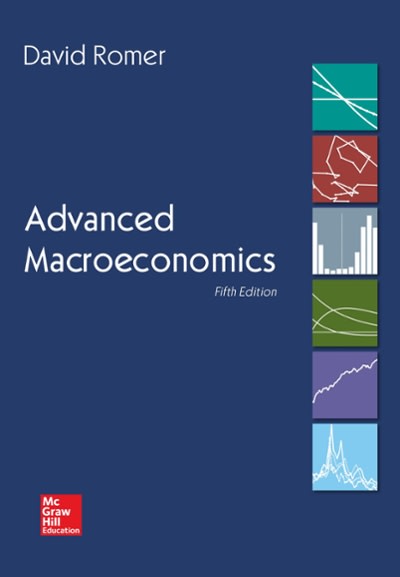This question asks you to use a Solow-style model to investigate some ideas that have been discussed
Question:
This question asks you to use a Solow-style model to investigate some ideas that have been discussed in the context of Thomas Piketty’s recent work (see Piketty, 2014; Piketty and Zucman, 2014; Rognlie, 2015). Consider an economy described by the assumptions of the Solow model, except that factors are paid their marginal products (as in the previous problem), and all labor income is consumed and all other income is saved. Thus, C (t) = L(t) [∂Y(t)/∂ L(t)].
(a) Show that the properties of the production function and our assumptions about the behavior of L and A imply that the capital-output ratio, K/Y, is rising if and only if the growth rate of K is greater than n + g that is, if and only if k is rising.
(b) Assume that the initial conditions are such that ∂Y/∂K at t = 0 is strictly greater than n + g +δ. Describe the qualitative behavior of the capital-output ratio over time. (For example, does it grow or fall without bound? Gradually approach some constant level from above or below? Something else?) Explain your reasoning.
(c) Many popular summaries of Piketty’s work describe his thesis as: Since the return to capital exceeds the growth rate of the economy, the capital-output ratio tends to grow without bound. By the assumptions in part (b), this economy starts in a situation where the return to capital exceeds the economy’s growth rate. If you found in
(b) that K/Y grows without bound, explain intuitively whether the driving force of this unbounded growth is that the return to capital exceeds the economy’s growth rate. Alternatively, if you found in
(b) that K/Y does not grow without bound, explain intuitively what is wrong with the statement that the return to capital exceeding the economy’s growth rate tends to cause K/Y to grow without bound.
(d) Suppose F (•) is Cobb-Douglas and that the initial situation is as in part (b).
Describe the qualitative behavior over time of the share of net capital income
(that is, K(t)[∂Y(t)/∂K(t) − δ]) in net output (that is, Y(t) − δK(t)). Explain your reasoning. Is the common statement that an excess of the return to capital over the economy’s growth rate causes capital’s share to rise over time correct in this case?
Step by Step Answer:







